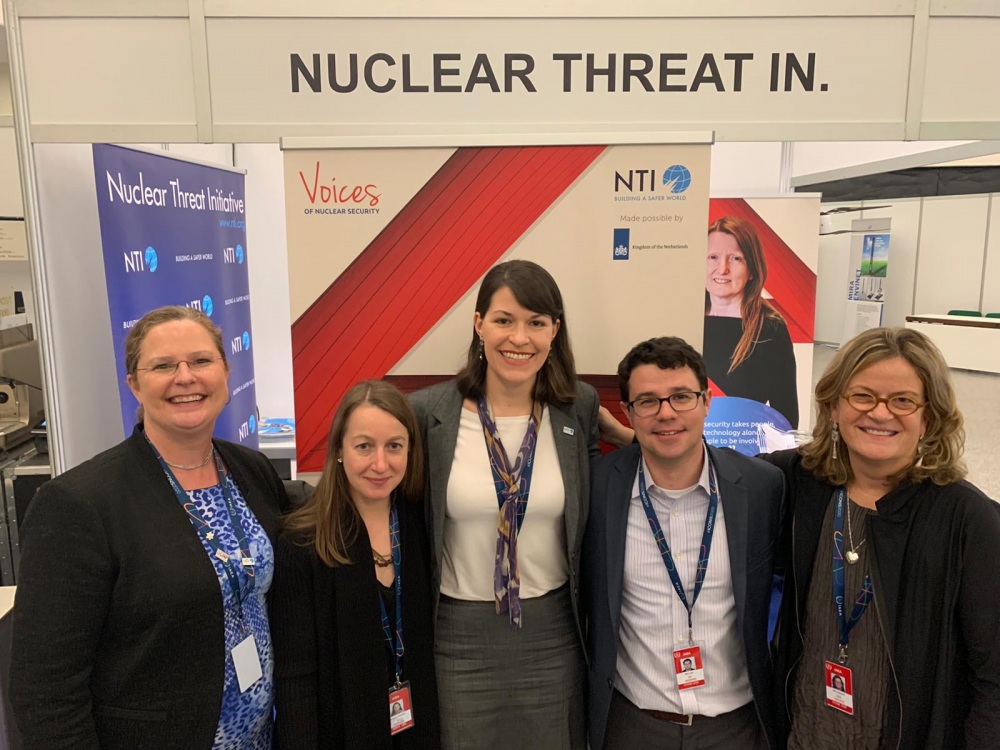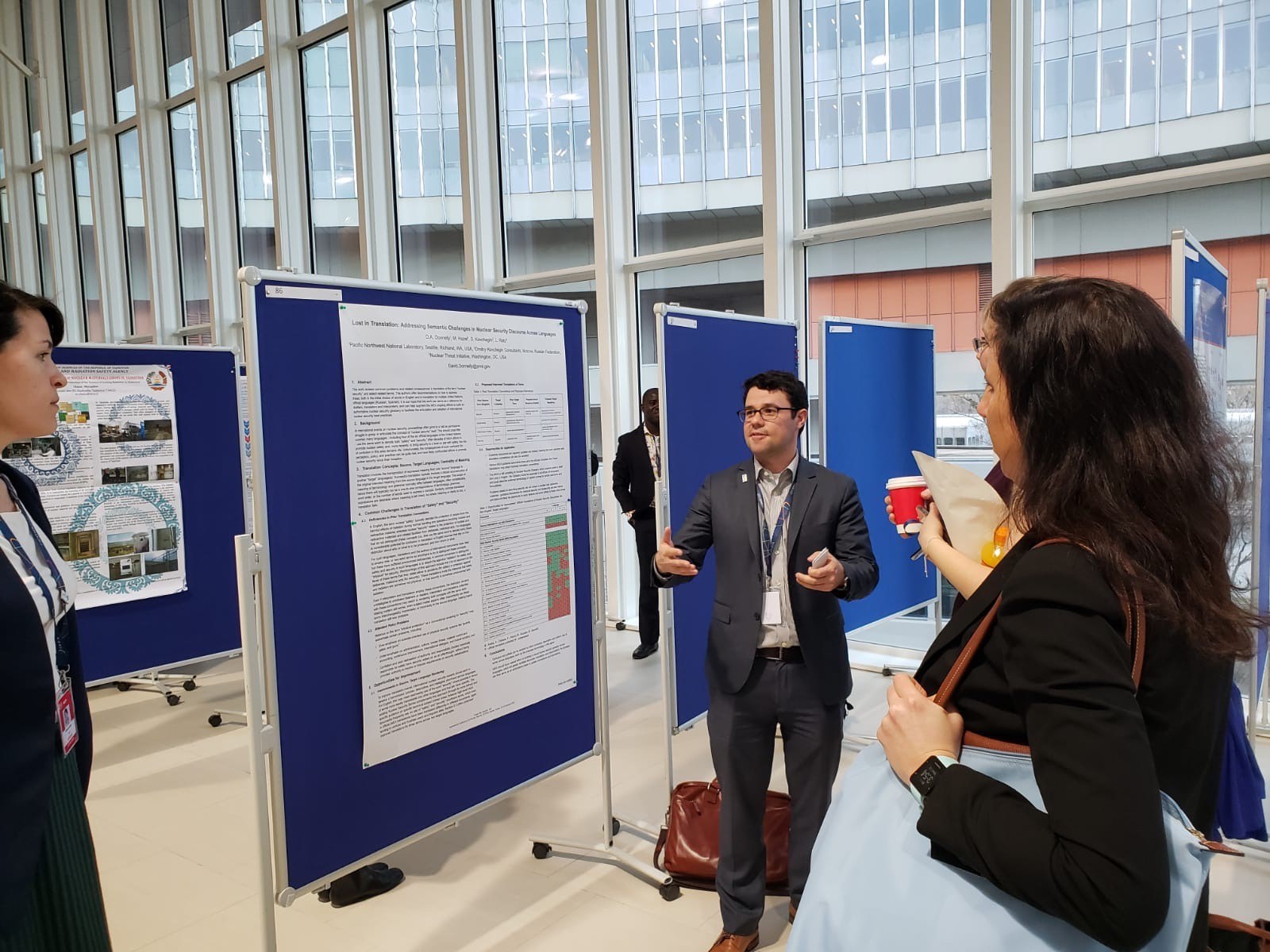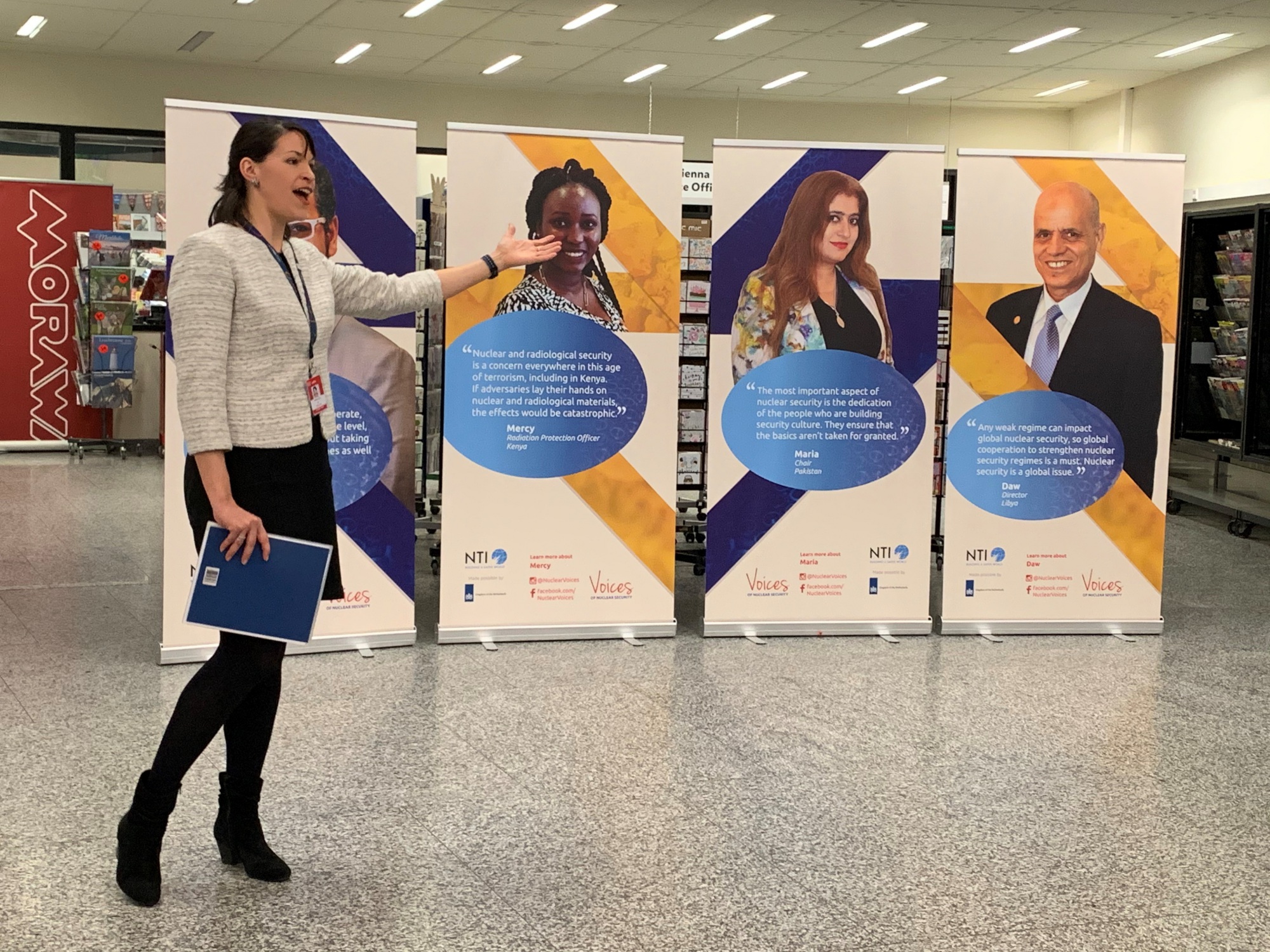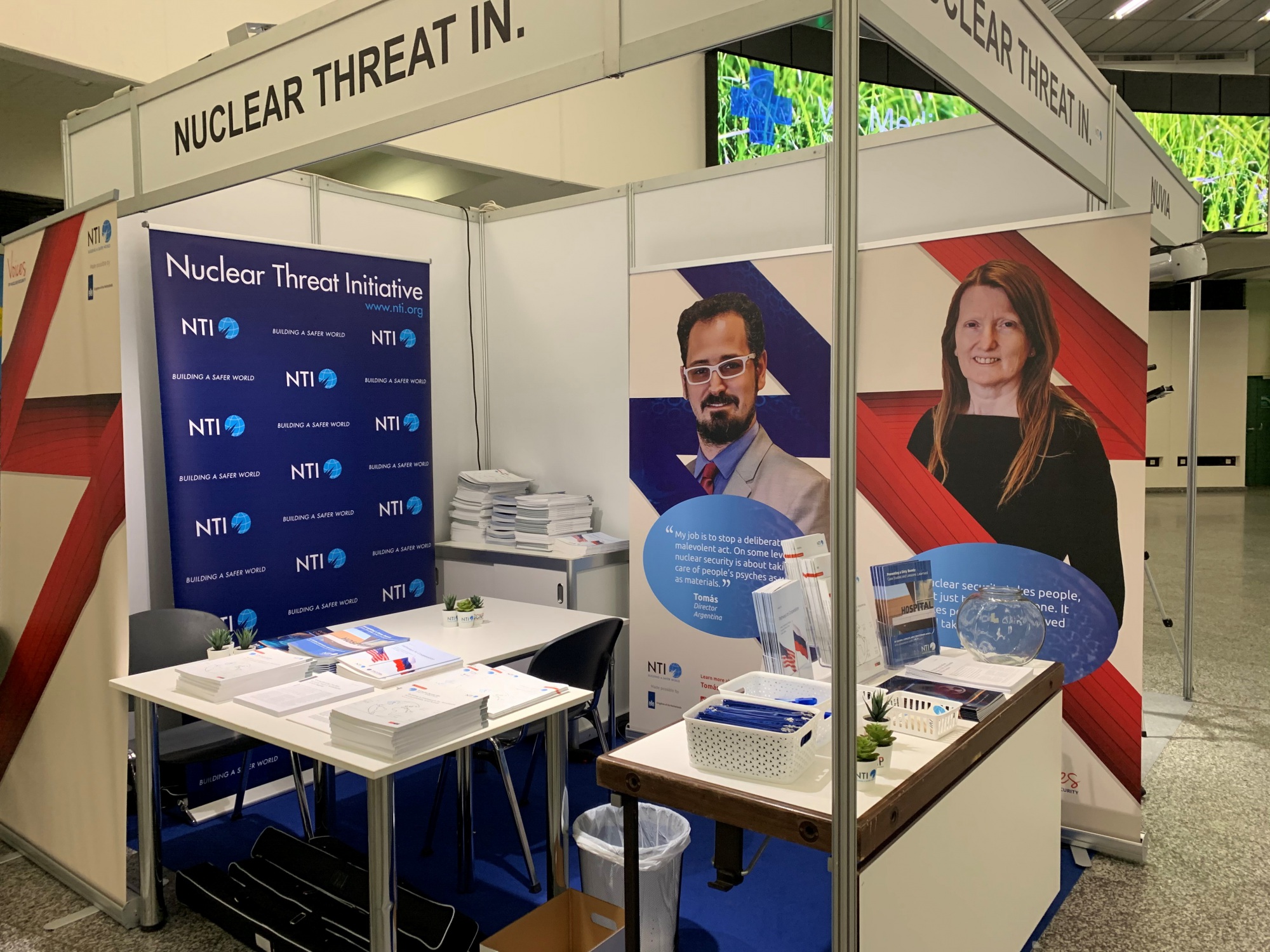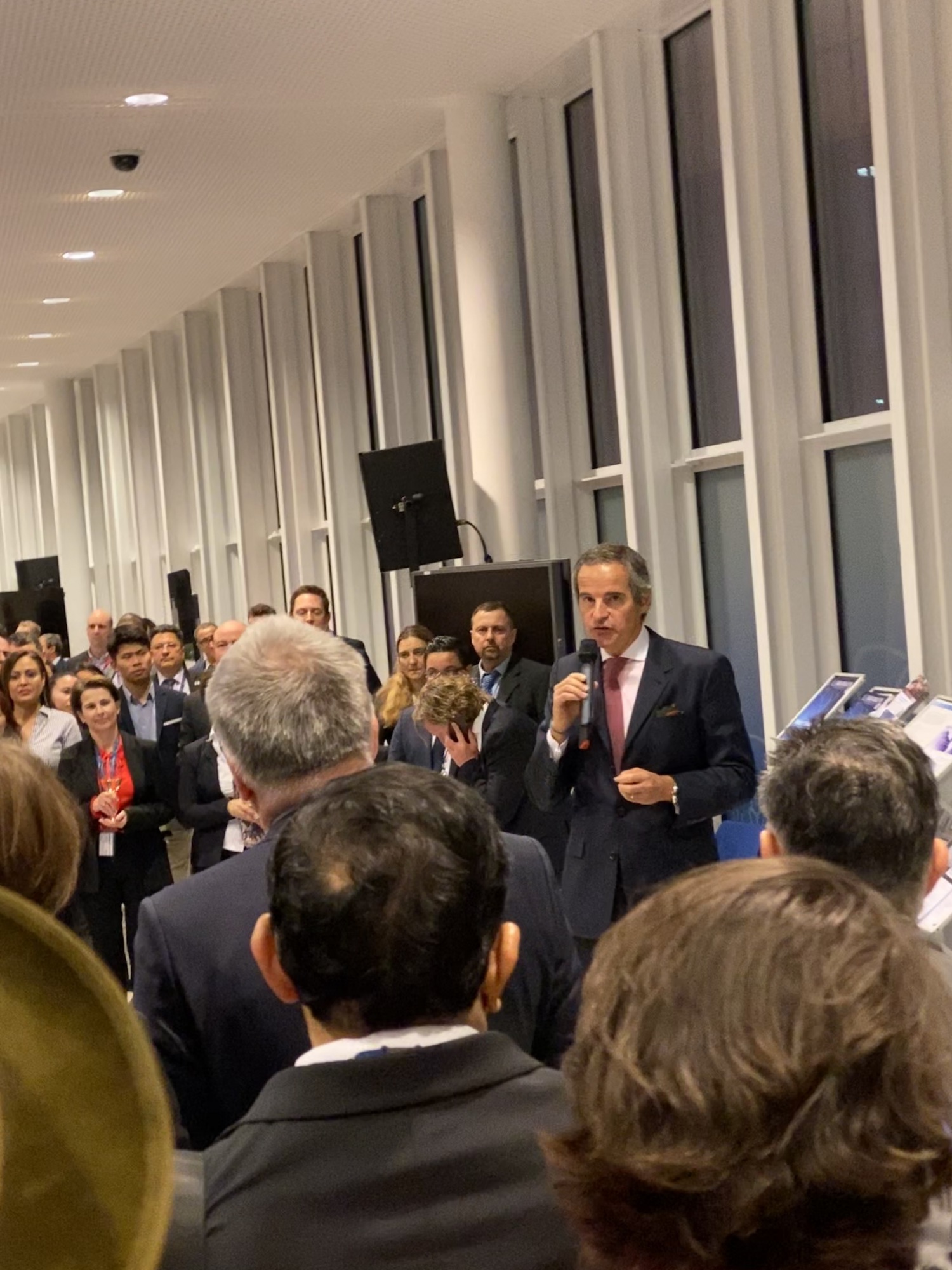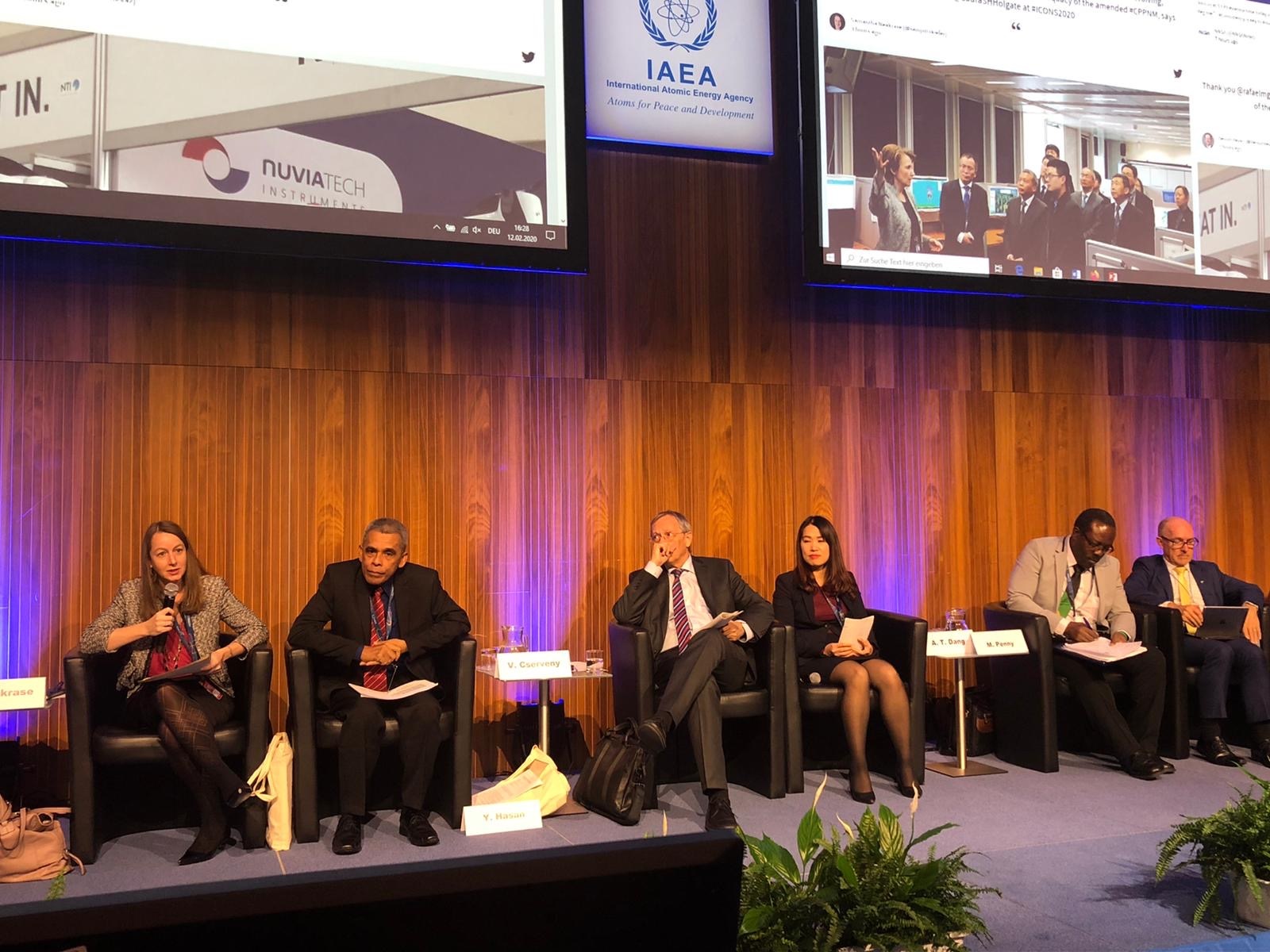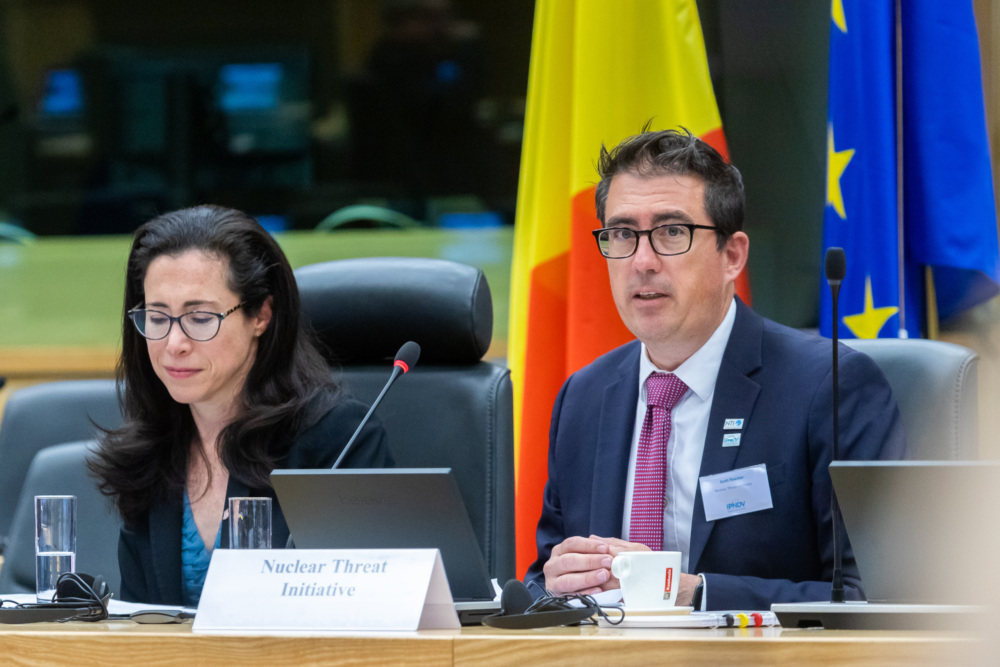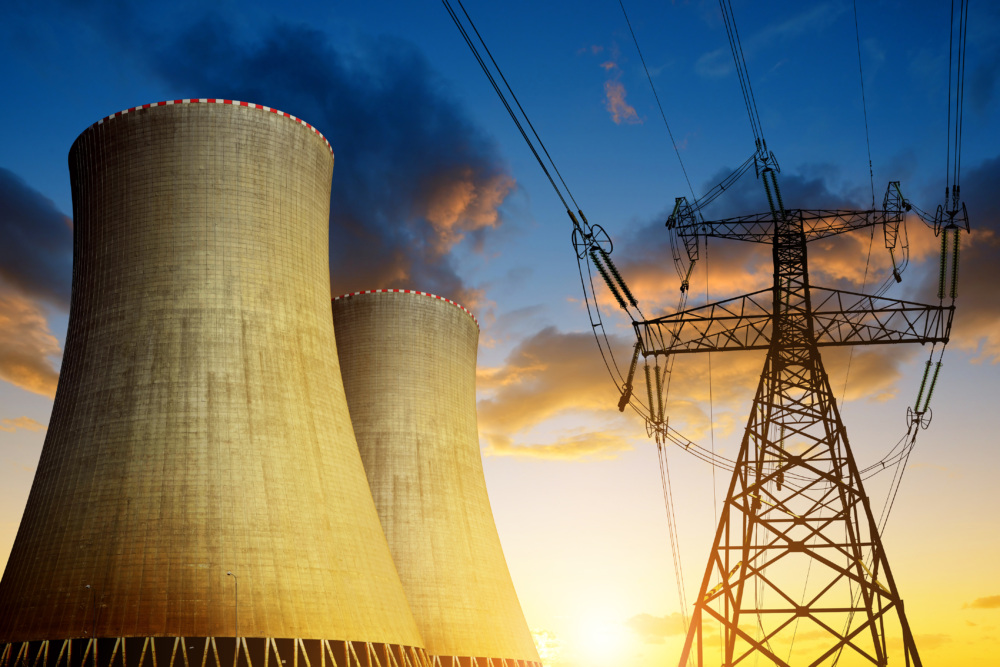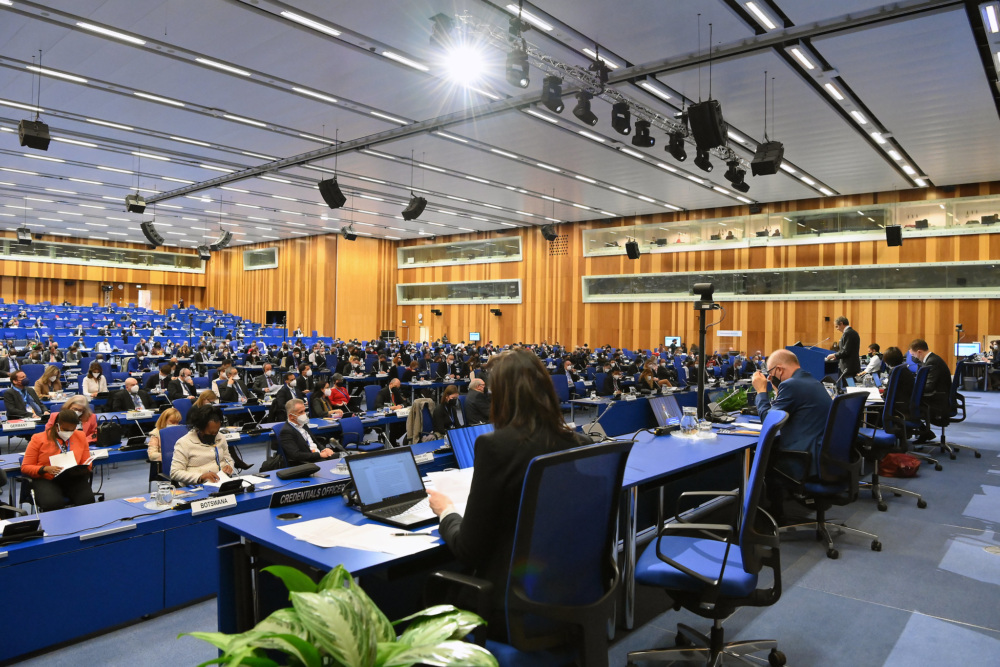
Samantha Neakrase
Senior Director
Atomic Pulse
It was a busy and exciting week for NTI staff who
participated in ICONS 2020, the third International Conference on Nuclear
Security hosted by the International Atomic Energy Agency (IAEA) held on
February 10-14. We hosted events, presented on panels and in poster sessions,
staffed the NTI booth, and Tweeted up a storm.
Important progress was made during the ministerial segment
of ICONS– the first two days of the conference dedicated to government
deliberations—as evidenced by strong national statements and a forward-leaning
ministerial declaration. But perhaps my biggest takeaway was the positive
energy during the conference. There was an air of excitement and optimism that
I hadn’t felt previously, and I credit it to enthusiasm about the new IAEA
Director General, Rafael Grossi.
In my preview
blog, I promised a post-ICONS review. The conference has taken some
time to digest, particularly as it required going through all the national
statements, but, in the spirit of better late than never, here are some highlights.
NTI by the Numbers
I’ll start with some highlights of NTI’s participation in
ICONS. NTI was out in force with six staff members making up our delegation.
Here’s what we were up to:
For more details on these presentations and papers, see here.
New Energy at the IAEA
One of my favorite moments of ICONS 2020 was Director
General Grossi’s informal remarks and toast at the Director General’s reception
on the first day of the technical sessions. The short remarks by Grossi, who
assumed office in December 2019, felt more like a coach’s pep talk to his
football team in the final minutes of a tie game than a formal speech. I mean
this in a good way. His inspiring words were a rallying cry for the nuclear
security community to work together for a common cause: strong nuclear security
to prevent nuclear terrorism and to preserve the benefits of peaceful use of
nuclear technology around the world. It was an exciting moment.
Grossi is energetic, creative, and likeable—and also smart
and pragmatic. His dynamic personality and deep experience across many areas of
multilateral diplomacy and nuclear policy should provide a huge boost for the
IAEA. By all accounts, he has hit the ground running. He has taken an inclusive
approach to his outreach by engaging not only with governments, but industry,
NGOs, development organizations, and the scientific community, among others. He
is also is looking carefully at how to strengthen the organization he now
leads. He has outlined a proactive and robust vision for the IAEA: seeking more
diverse funding sources, improving coordination and communication between the
IAEA and others and within the IAEA itself, and promoting a more inclusive understanding
of the relevance of nuclear security in countries around the world. His opening
statement at ICONS is a worthwhile read.
Welcome Progress at the Ministerial Segment
In my ICONS 2020 preview, I suggested some metrics for assessing
whether the ministerial segment was a success. The bottom line: A lot of
progress was made compared to 2016, with a stronger ministerial declaration
that included some truly exciting innovations. However, there is still plenty of
room for improvement.
Participation of ministers: I identified the number
of delegations represented at the ministerial level as one metric for success. I
was hoping to see around 60 ministers and while the final number of 53 didn’t
quite get there, it was still an improvement over 2016, when 47 ministers
attended. Only 34 ministers attended in 2013 ICONS. Minister-level attendance
is one of several measures of a country’s commitment to nuclear security and
support for the IAEA, though it’s worth noting that countries like Canada and
Australia, who are strong champions of nuclear security in both words and
deeds, did not send ministers.
The ministerial declaration: Many experts and
government officials were hoping for a ministerial declaration that would be
short and high-level, would highlight key nuclear security priorities, and would
be more forward leaning than in 2016. While the declaration didn’t go as far as
many would have liked in some areas (see here
for my own personal wish list), there were some innovative additions.
There also were a few notable omissions:
Progress and Commitments: One hundred and four states
made available their national statements on the IAEA’s conference website. Thirty-two
of the statements were posted in Arabic, French, Russian, or Spanish. When
reviewing these statements, I looked for two things—statements of progress and
new commitments.
Overall, the quality of these national statements was higher
than past years and around half of the statements contained references to
specific activities a state had taken since the 2016 ICONS to strengthen its own
security or support global nuclear security efforts. These statements went far
beyond the generic “we are doing really great things and our nuclear security
is the best.” In addition to progress, many countries highlighted activities
they were planning to undertake in the near future, from hosting nuclear
security workshops, to inviting an IPPAS or INSSP mission, to updating nuclear security
laws and regulations.
Some highlights from the national statements:
Support for the IAEA: At ICONS I was looking for
signs of strong and unequivocal support for and recognition of the IAEA’s role
in nuclear security. There are a range of perspectives about the IAEA’s role in
nuclear security, with some countries arguing the IAEA should focus on
technical cooperation and assistance to support peaceful uses of nuclear
technology and less on nuclear security. On the one hand, the ministerial
declaration included strong language in support of the IAEA’s “central role” in
nuclear security that it had not included in 2016 and encouraged member states
to use IAEA services and provide financial, technical, and human resources to
support the IAEA’s work. Moreover, the conference ended with more than $20
million in commitments to the IAEA’s Nuclear Security Fund for its nuclear
security activities. On the other hand, numerous national statements continued
to stress that nuclear security should not be at the expense of technical
cooperation. Of course, nobody is arguing that it should, but that perception unfortunately
still has a foothold at the IAEA.
A roadmap for the amended CPPNM review: Although the
ministerial declaration did not address the issue of holding regular review
conferences or encourage states to fulfill obligations to submit information on
laws and regulations to the IAEA under Article 14, there was a huge spotlight on
the amended CPPNM throughout ICONS. Universalization was very clearly a common
priority across a diverse set of countries and the upcoming review conference
in 2021 loomed large.
An IAEA side event on strengthening international
institutions focused heavily on the amended CPPNM, with the Swiss co-chair of
the review conference identifying goals for the review. An FMWG-hosted side
event (in which NTI participated) focused on the amended CPPNM review
conference and how different trends that impact nuclear security, including
emerging technology, should be taken into account in the review. Finally, two
technical sessions also highlighted the amendment, one on international legal
instruments and the other dedicated to discussing the amended CPPNM’s implementation
and the review conference, in which I participated.
In June of this year, the Preparatory Committee for the
amended CPPNM will meet, so we will see if ICONS created any momentum in
support of robust, substantive, and regular review conferences.
Looking Ahead
It’s hard to say yet whether ICONS created new, positive
momentum for nuclear security at the IAEA and writ large. ICONS has been held
on a three-year (approximately) cycle since 2013, but the ministerial
declaration announced that ICONS will be held every four years going forward. That
seems like a long way away, but in those four years, we will be able to observe
how the new Director General’s agenda develops. We will know whether there was a
successful shift to more predictable and sustainable funding for the IAEA’s
nuclear security work. We will know the fate of the amended CPPNM review
conference – whether it was a review conference with meaning and substance and
whether countries agree to hold another one. And we will know if perceptions
about nuclear security shift toward greater appreciation of the link between
nuclear security and peaceful use.
Luckily, for those who just can’t wait another four years
for some nuclear security excitement, NTI is here to help. In June, we’ll be
launching the fifth edition of the NTI Nuclear Security Index. There will
be some new features in this year’s edition, with the inclusion of security
culture, nuclear security INFCIRCS, support for the IAEA, and more. In exciting
news, this year’s edition also feature an assessment of radioactive source
security around the world.
Stay tuned!
Sign up for our newsletter to get the latest on nuclear and biological threats.
Scott Roecker, vice president of the Nuclear Materials Security team, sat down with NTI's Mary Fulham for the latest in Atomic Pulse's "Get to Know NTI" series.
For nuclear power to be a problem solver rather than a problem maker, the international community must push for a smart brand of nuclear power that prioritizes safety and security.
This week in Vienna, experts from the Nuclear Threat Initiative are joining government officials and experts from international organizations, non-governmental organizations, academia, and the nuclear industry for the first-ever review of the only legally binding treaty on nuclear security—the amended Convention on the Physical Protection of Nuclear Materials (A/CPPNM).
